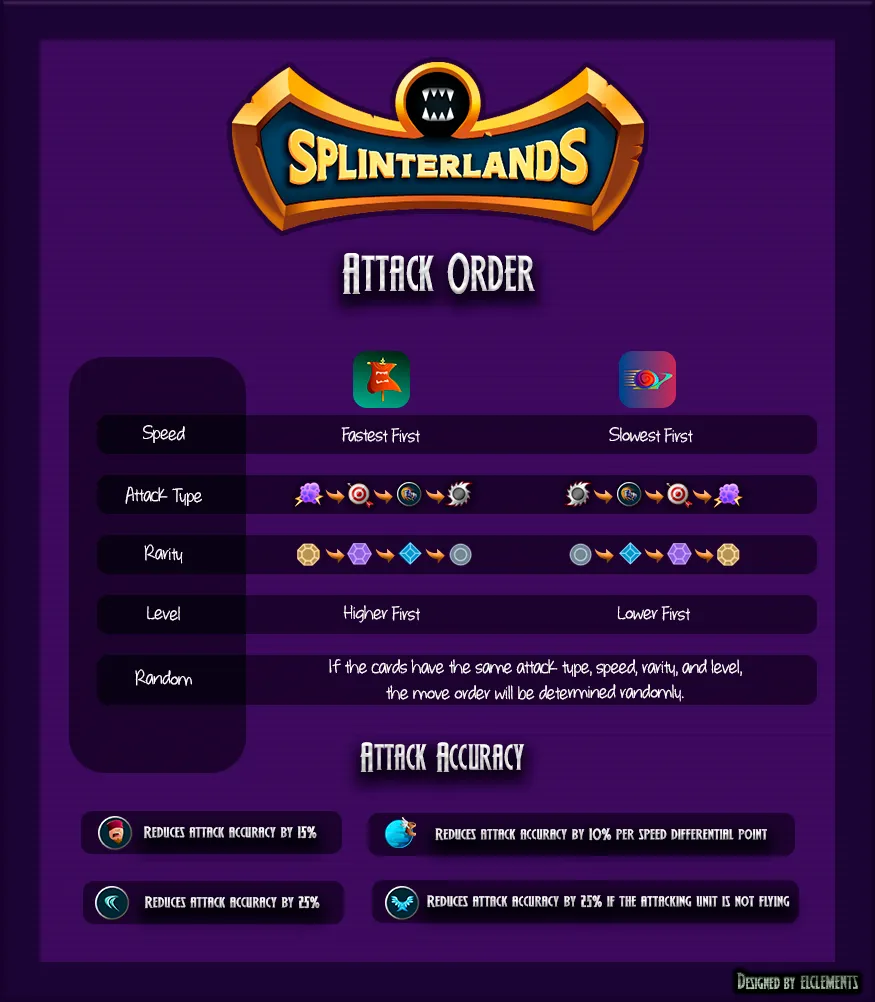
Every week there is a Splinterlands challenge that can be found in this week's post. I also encourage Splinterlands players to partake in the challenge because they get to learn about the game. In this week's challenge, we talk about some tips for the game.
What is attack order?

The basic information for the Attack Orders and Accuracy can be found here. This is the order in which monsters will attack. On the left is the usual attack order that most fights go through, and on the left is the attack order (which is reversed) when there is a reverse speed ruleset. Using this, you can position your cards to go first, and this can give you advantage in killing off monsters first.
Attack order Variables
- Speed
- Attack Type (Magic first, ranged second, ability, and melee last)
- Rarity
- Level
- Random
Above is the list of how the attack order is decided. Speed is the most important thing, followed by attack type, rarity, and level. The ability refers to armored strike, and other newer abilities that let monsters attack. Rarity and Level also factor in, and I have won matches because I had higher level cards. If all the above factors are equal, the game randomly decides the order for those cards. So depending on how the fight goes, luck can be a huge factor.
Exceptions
There are two exceptions: ambush and brawl home advantage. Ambush allows monster to attack before monsters can normally attack. It only applies for that one round, and brawl home advantage only applies to brawls.
Attack Accuracy
- Blind reduces attack accuracy by 15%
- Dodge reduces attack accuracy by 25%
- Speed decreases attack accuracy by 10% per point difference
- Flying decreases attack accuracy by 25% if it is not flying
This determines how often you will land your attacks against your opponent with physical attacks (melee or ranged). I always knew that abilities would affect things, but I didn't know by how much until I saw the picture above. It's nice to know just how much it is. It stated in that page that the attack accuracy starts at 100 at the base rate before these changes are applied. It shows just how much speed can matter when landing those hits.
Exceptions
- True Strike from the ability or ruleset (Aim True)
- Phase (allows magic damage to be affected by the accuracy instead of always land)
- Snare (remove flying from a monster)
There are a few exceptions above. True Strike makes sense as it means no attacks can miss. Phase is interesting because those attack accuracy can also affect magic monsters, and snare can help against flying monsters. Overall, there aren't too many abilities that are exceptions for attack accuracy.
Conclusion
I think that the attack order and accuracy are things that people don't understand well, and I also learned a few new things from viewing the help page on attack order and accuracy. I don't think I have ever heard about the base rates on how much accuracy was affected by speed difference or abilities before this. These two things apply to all fights, and they can give you an edge when deciding what type of lineup to use against your opponents. When I first played, attack order was the thing that confused me the most, and it wasn't until later that I understood how it worked. I find that it can be confusing if nobody tells you.
Did you learn anything new about attack order and accuracy from this post?
Feel free to leave a comment if you read my post. If you have any questions, feel free to ask and I will do my best to answer.